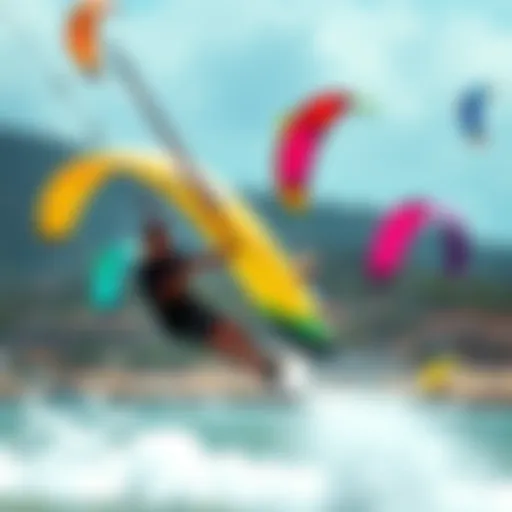Kite Surfing Adventures Along South Carolina's Coast
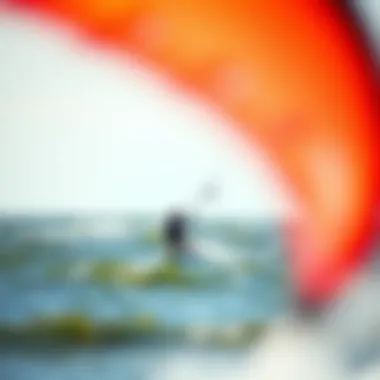

Intro
Kite surfing in South Carolina is more than just a water sport; it’s an exhilarating experience that combines the thrill of surfing with the adrenaline rush of flying a kite. The state boasts picturesque coastlines, ideal wind conditions, and a blossoming community of kiteboarding enthusiasts. From the serene shores of Folly Beach to the vibrant waters around Charleston, South Carolina has become a sought-after destination for both seasoned kite surfers and newcomers alike.
As you navigate this comprehensive guide, you'll discover the essentials of kite surfing in South Carolina, from the gear you'll need to hit the waves to the vital safety practices that ensure a memorable outing on the water. With enticing locations at every turn, there's much to explore and learn about this unique sport.
Gear Insights
Latest Gear Reviews
When it comes to kite surfing, having the right gear makes all the difference. The market is constantly updating with new technologies and innovations that enhance performance and safety. Popular brands, known for their high-quality kiteboarding equipment, stand out among many options.
A few notable products worth mentioning include:
- Naish Pivot: This all-around kite is well-known for its versatility and reliability. Perfect for moderate wind conditions, it offers excellent handling for both adept riders and novices.
- Duotone Neo: Favored for its performance in waves and light winds, the Neo provides a good balance between power and control. Perfect for those looking to explore freestyle maneuvers.
- Cabrinha Switchblade: This kite is celebrated for its stability and ease of use, making it suitable for riders progressing through their skill levels.
These options are just a glimpse of the gear available. Reading detailed reviews can help you choose what suits your riding style best. For in-depth discussions and updates on the latest gear, consider checking forums on Reddit or specialized kiteboarding websites.
Essential Gear for Beginners
Diving into kite surfing doesn’t have to be overwhelming, thanks to straightforward gear options available for beginners. Here are some essentials to consider:
- Kite: A beginner kite should ideally have a moderate aspect ratio, making it easier to handle.
- Bar and Lines: A good control bar and a set of lines are crucial for maneuvering your kite effectively.
- Board: Opt for a larger board that provides stability and buoyancy.
- Safety Gear: A well-fitted impact vest and helmet are good precautionary measures.
- Lesson Support: It's advisable to seek a lesson from a local instructor before heading out solo, as they can provide tips on gear usage and safety practices.
Getting the basics right will pave the way for a safe and enjoyable kite surfing experience in South Carolina.
Techniques and Tips
Advanced Tricks and Techniques
Once you’re familiar with the gear and comfortable riding the waves, you may be ready to explore some advanced tricks. A smooth progression from basic moves to more complex tricks is key. Starting with jumps and grasping techniques like the backroll or megaloop can be exciting.
- Jumping: Focus on loading your lines by edging your board firmly before releasing off the water.
- Backroll: While jumping, initiate a rotation by looking back over your shoulder, bringing your knees to your chest.
- Megaloop: This is a daring move for experienced riders, involving a big jump followed by a loop in the air, creating an exhilarating view!
Practicing these tricks should be done with caution and ideally, under supervision or in a controlled environment.
Safety Practices for Kiteboarders
Knowledge about safety not just enhances your experience but is also crucial for your wellbeing on the water. Here are some guiding principles:
- Know Your Surroundings: Always be aware of other water users and environmental challenges such as tides and currents.
- Pre-Flight Check: Double-check your gear before getting on the water. Look for wear and tear on lines and inspect the kite for any damages.
- Emergency Procedures: Understand how to control your kite in case of an emergency. Practice your self-rescue techniques on calm days.
The kite surfing community in South Carolina thrives on the tenets of respect, knowledge, and safety. Integrating these principles will elevate your engagement with this thrilling sport.
The Rise of Kite Surfing in South Carolina
Kite surfing has emerged as a popular water sport in South Carolina, capturing the attention of both residents and visitors. The state’s unique geography provides an ideal backdrop, with its expansive beaches and diverse wind conditions. This article aims to explore the significance of kite surfing's rise in this region, examining its historical context and current trends. Understanding these factors not only highlights the sport's local popularity but also underscores its economic and cultural contributions to the area.
Historical Context
The roots of kite surfing in South Carolina stretch back several decades. Initially, this thrilling sport was a niche activity practiced primarily by windsurfing enthusiasts. The arrival of modern kite technology in the late 1990s transformed kite surfing into a distinct pursuit. Early adopters faced challenges, as the equipment was still evolving. Riding with a parachute-style kite attached to a small board required a blend of skill and courage.
Through the years, kite surfing began to gain traction, especially as more instructional schools opened up along the coast. Charleston’s vibrant waters attracted adventurers eager to embrace this fast-paced sport. The first local competitions started popping up in the early 2000s, reinforcing a sense of community among kite surfers. Over time, local enthusiasts began to share their skills with aspiring riders, encouraging a collaborative environment.
Since then, places like Folly Beach have become synonymous with kite surfing, drawing in a mix of tourists and locals alike. The community has witnessed a gradual shift from a handful of passionate kiteboarders to a thriving network of kite surf schools, shops, and social groups. Now, dozens of kite surfing schools operate, offering lessons to newcomers and building a foundation for the sport's future in the state.
Current Trends
Today, kite surfing in South Carolina is on the rise, thanks in part to a combination of factors. Advances in gear design and increased accessibility have brought new players into the sport. Kite manufacturers have rolled out user-friendly kites that cater to beginners while still offering performance features for seasoned riders. This balance encourages individuals of various skill levels to join the kite surfing community.
Furthermore, the growing awareness of outdoor activities aligns with trends in self-care and wellness. Many individuals seek exhilarating experiences that deliver both thrill and a sense of accomplishment. Kite surfing fits perfectly within this paradigm. The added benefit of engaging with nature amplifies the appeal for both young and older enthusiasts.
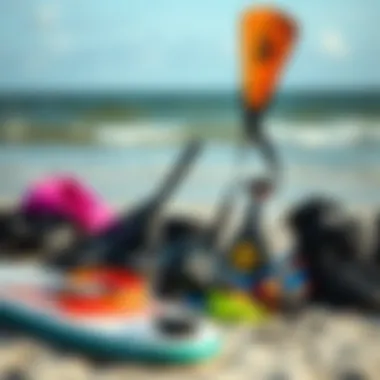
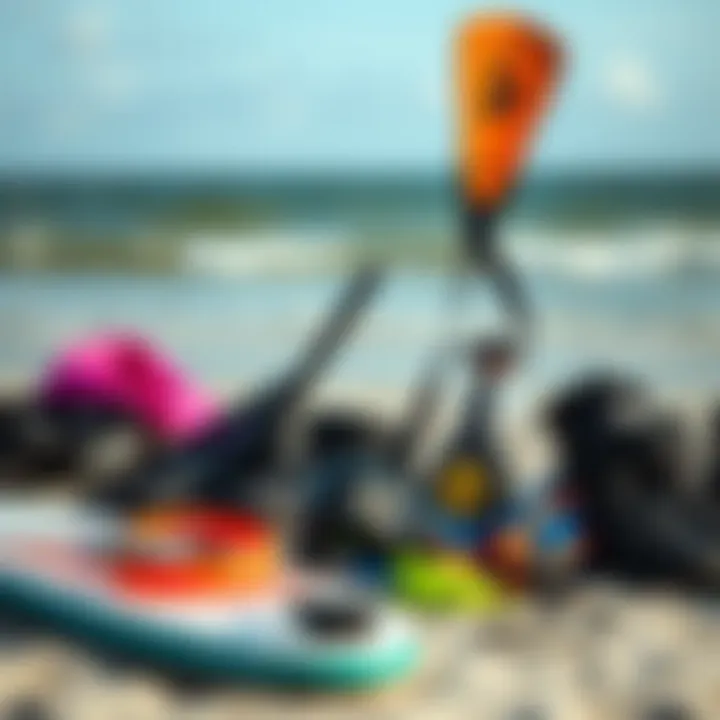
As kite surfing gains popularity, events and competitions across the state have become more frequent and better attended. Local competitions often draw crowds, showcasing talented riders and fostering a spirit of camaraderie. Social media also plays a monumental role in this trend. With platforms like Instagram and TikTok allowing users to share stunts and sea-side escapades, individuals are continuously encouraged to take the plunge into kite surfing.
Kite surfing has rapidly transitioned from an obscure hobby to a hallmark of coastal life in South Carolina, captivating those who seek adventure and connection with nature. The future seems bright for this sport, as it continues to evolve and inspire riders of all levels to take to the skies and waters of this picturesque state.
Ideal Locations for Kite Surfing
Finding the right spot to kite surf can make all the difference. A good location is more than just about the aesthetics; it involves understanding wind patterns, water conditions, and the local culture. South Carolina boasts a range of stunning locations that are not only great for kite surfing but also offer a slice of the vibrant coastal lifestyle. The benefits of choosing the ideal spot include smoother winds, safer waters, and an engaging community that enhances the entire experience.
Outer Banks: A Nearby Gem
The Outer Banks stands out as a prime location for kite surfing bliss. A mere stone's throw from South Carolina, it features expansive beaches with consistent winds that draw both locals and visitors. The unique geography creates ideal conditions for both novices and seasoned kite surfers alike. Besides, the sheer beauty of the landscape—from sunrises to sunsets—is a sizable bonus.
Many kite surfers appreciate the variety of conditions that the Outer Banks offers. From choppy waves for the adventurous rider to smoother waters for those just learning the ropes, there’s something here for everyone. The local community often holds events and competitions, fostering a spirited atmosphere that calls kiteboarders to join the fun.
Charleston: Winds and Waves
Charleston's rich history and stunning architecture serve as a backdrop to its kite surfing scene. The waterways here present several spots where the wind conditions are generally favorable. Folly Beach, in particular, offers consistent breezes, making it a perfect venue for kite surfing. It attracts both weekend warriors and those in deep pursuit of the sport.
Navigating the scenery adds unique charm to the experience. Kite surfers can ride the waves while soaking in views of the historic Battery or the Morris Island Lighthouse in the distance. With multiple kite surfing schools present along the beaches, it's a fantastic place to connect with instructors who offer valuable tips for improvement.
Folly Beach: The Local Favorite
Folly Beach might well be the crown jewel among kite surfing spots in Charleston. Not only is it a favorite among locals but it also draws tourists from afar. The winds tend to be steady, and the community vibe is friendly and welcoming. On any given day, you can find an array of kite surfers enjoying the waves while beachgoers look on in awe.
One of the perks at Folly is the variety of conditions and challenges it presents. Beginners can practice their skills in calmer waters, while advanced kite surfers can tackle windier days when the ocean provides more action. The local surf shops often have rental gear, so you can try your hand without needing to invest heavily right away.
Myrtle Beach: Tourist Attraction and Kite Surfing Hub
Myrtle Beach is known for its lively atmosphere and family-friendly attractions. But it is also a kite surfing haven, offering excellent conditions for all skill levels. The beach stretches for miles, allowing surfers plenty of space to find their niche. The region's reliable winds make it a go-to place, attracting kite surfers from near and far.
This area tends to buzz with activity, especially in the peak season. Local organizers often set up events, competitions, and even workshops to help both newbies and experienced kite surfers come together. While enjoying the thrill of riding the waves, you also get to soak in a bit of the local nightlife and culture.
"Kite surfing in Myrtle Beach feels like riding a wave of adrenaline, with the added perk of beautiful coastlines around you."
Finding the best kite surfing location is all about personal preference, but look no further than South Carolina's key spots to ignite your passion for the sport. Whether you’re captivated by the wild beauty of the Outer Banks or the vibrant life of Myrtle Beach, each spot tells its own unique story.
Essential Gear for Kite Surfing
Equipping yourself for kite surfing isn't just about the thrill of the ride; it’s a matter of ensuring safety and maximizing enjoyment on the water. Each piece of gear plays a crucial role, whether you’re soaring through the skies or effortlessly gliding along the waves. Let’s unpack the essential elements that every kiteboarder should consider, giving both newcomers and seasoned surfers vital insights for their adventures.
Kites: Types and Specifications
When it comes to kites, variety is the name of the game. Not all kites are created equal, and choosing the right type can greatly affect your experience on the water. Here’s a breakdown to help steer you in the right direction:
- Inflatable Kites: These are the most common types, perfect for beginners due to their ease of handling. They are stable, forgiving, and can withstand gusts well. Brand names like North Kites and Best Kiteboarding offer reliable options in this category.
- Foil Kites: Slightly more complex, these kites have no rigid frame and rely on air pockets to create lift. They can be used in a wider range of wind conditions. Look to brands like Ozone for quality foil kites.
- Recreational vs. Performance Kites: Recreational kites are tailored for casual users, focusing on comfort and simplicity, while performance kites are designed for those who chase adrenaline, featuring advanced designs for speed and agility.
The size and shape of your kite also matter. Generally, larger kites capture more wind, delivering more power, but they can be trickier to control in strong gusts. A good rule of thumb is to choose a kite size based on your weight, wind conditions, and skill level.
Boards: Choosing the Right Fit
A well-matched board can significantly enhance your kite surfing experience. Making the right choice hinges on your level of expertise, weight, and the type of riding you intend to do. Here’s what to keep in mind:
- Beginner Boards: These tend to be wider and longer, providing better stability, which is crucial for those just starting out. Look for boards from Liquid Force or Slingshot that are designed for ease of use.
- Freestyle and Freeride Boards: For the adventurous souls, boards tailored for tricks will generally be smaller and lighter. They allow for swift movements and jumps, enhancing performance during maneuvers.
- Directional Boards: Used mainly in the surf, directional boards are designed to be ridden in one direction, making them specialized for wave riding. These boards are often favored in locations like Folly Beach, where waves complement the riding style.
Don't overlook the importance of materials either. A board made from durable materials will withstand the wear and tear that comes with frequent use.
Safety Equipment: Harnesses and Helmets
Safety gear should never be an afterthought. While the thrill of kite surfing can tempt you to skip the protective gear, being adequately prepared can be the difference between a fun day out and a potentially hazardous one. Here’s a closer look:
- Harnesses: Choose between seat harnesses, which provide more support, or waist harnesses, offering greater freedom of movement. Consider brands like Mystic or Ion for reliable options. The right harness should feel comfortable and fit snugly without restricting your movement.
- Helmets: While kite surfing itself may feel safe from a distance, the water and wind can throw unexpected curveballs. Helmets designed for water sports, such as those made by Pro-Tec, ensure head protection against falls or collisions.
- Impact Vests: Though not mandatory, wearing an impact vest is advisable for additional buoyancy and protection against rough waters or hard landings.
"Being prepared can save your life, but it also makes the experience much more enjoyable. No one wants to cut their trip short due to injuries caused by neglecting safety gear."


By investing in appropriate gear—kites, boards, and safety equipment—you’re setting the stage for a fulfilling kite surfing experience in the stunning landscapes of South Carolina. Start your adventure with the right tools and hit the waves with confidence.
Techniques for Kite Surfing
In the world of kite surfing, mastering techniques is essential. It’s not just about harnessing the wind and riding the waves; it's about building confidence, improving your skills, and enhancing your overall experience on the water. The right techniques can significantly affect the safety and enjoyment of your kite surfing adventure. By developing a strong foundation, even beginners can enjoy profound successes while seasoned kiteboarders can refine their skills and explore advanced maneuvers.
Beginner Techniques: Getting Started
Starting off with kite surfing involves a mix of thrill and learning. For newcomers, understanding the fundamentals is crucial to not only enjoy the sport but also to stay safe. Here are some key points for beginners:
- Kite Control: Learning how to control the kite is fundamental. Beginners should start with the basic concept of flying a trainer kite on land. This exercise helps you familiarize with handling the lines and feeling the kite's power.
- Body Positioning: Your stance on the board and how you position your body can enhance balance. Keeping a low center of gravity is often a good idea, so bend your knees slightly. This helps absorb the impact of the waves.
- Launching and Landing: One of the most vital skills for beginners is safely launching and landing the kite. Understanding how to communicate effectively with a partner during these processes is essential to maintain safety yet have fun.
These beginner techniques not only provide a good start but also lay the groundwork for more advanced maneuvers later.
Intermediate Techniques: Building Skills
Once you’ve learned the basics, you can start focusing on consolidating your skills with intermediate techniques. This is where kiteboarding becomes more engaging, as you begin to connect the dots and find your style.
- Riding Upwind: Learning to ride upwind gives a sense of independence. The technique involves adjusting the position of your kite, coordinating your body weight, and applying pressure on your back foot. Practicing this will allow you to navigate back to your starting point with ease.
- Transitions: Intermediate riders often work on transitions, which are the ability to switch direction smoothly without stopping. Practicing this will enhance your agility and make your rides much more fluid.
- Looping the Kite: For those who want a little thrill, trying to loop the kite while going downwind can be a fun addition. It builds confidence in handling the kite while increasing the excitement of riding.
These techniques not only enhance your riding abilities but will also allow you to better control your kite, increasing the overall joy of the ride.
Advanced Techniques: Tricks and Stunts
For those who have already spent some time on the water and want to take their kite surfing to the next level, advanced techniques can open a world of excitement. These may require a lot of practice but provide immense satisfaction:
- Jumping: One of the crowning achievements of kite surfing, jumping involves harnessing the power of the kite to lift off the water. Key factors include timing your pop off the edge of the board and initiating the jump at the right moment.
- Handle Passes: For those seeking a high level of complexity, handle passes can be quite the spectacle. This involves passing the control handle behind your back while in the air, demanding good timing and coordination.
- Freestyle Maneuvers: Tricks like the back roll, front roll, or a kite loop can be rewarding once mastered. These require both strength and finesse in handling the kite. To perform these correctly, you need to develop muscle memory through consistent practice.
By engaging in these advanced techniques, riders are not just competing against themselves, but they are also adding flair to their performances, making kite surfing a captivating sport.
Consider practicing these techniques in calm, open waters before tackling rougher conditions. Safety is paramount.
In summary, each set of techniques—from foundational to advanced—holds importance in developing your kite surfing skills in South Carolina’s picturesque waters. Whether you're just starting or pushing the envelope, perfecting your technique makes for a more thrilling and safe kite surfing experience.
Safety Considerations
Engaging in kite surfing can be exhilarating, but it also comes with its fair share of risks. Understanding safety considerations is crucial for enjoying the sport without putting yourself or others in danger. This section will dive into important aspects like weather conditions, personal safety, and environmental awareness, offering insights that every kiteboarder, instructor, traveler, or adventurer should keep in mind.
Weather Conditions: Understanding Wind Patterns
Weather plays a pivotal role in kite surfing. Knowing how to read wind patterns can mean the difference between a thrilling ride and a dangerous situation. Wind strength and direction significantly impact the kite’s performance, and unpredictable changes can catch even seasoned surfers off guard.
- Ideal Wind Speeds: For kite surfing, wind speeds between 12 to 25 knots are usually considered ideal. It's vital to check local weather reports or websites like NOAA.gov before heading out.
- Wind Direction: Offshore, onshore, and cross-shore winds offer different experiences. Offshore winds may seem appealing at first, but they can blow you away from the shore. Onshore winds bring you back to the beach, enhancing safety. Cross-shore winds can allow for a bit of thrill but can also lead to complications if not handled properly.
"Always trust your instincts; if conditions feel off, don't hit the water."
Conduct regular checks on wind speed and direction, and don’t hesitate to postpone your session if conditions appear unfriendly.
Personal Safety: Preparing for the Unexpected
Kite surfing can be unpredictable, so being prepared is key to ensuring your safety. Here are a few crucial tips:
- Wearing Safety Gear: Don’t take shortcuts when it comes to gear. A well-fitted harness, helmet, and impact vest can protect you during unexpected falls or crashes. Many riders underestimate the potential for accidents, but even small mishaps can lead to injury.
- Buddy System: Whenever possible, kite with a friend. Having someone nearby can help in case of emergencies. It’s not just about safety; a buddy can help spot changing conditions that you might miss while focused on your ride.
- Learn to Self-Rescue: Before hitting the water, make sure you’re familiar with self-rescue techniques. A strong understanding of how to return to shore in case of equipment failure or sudden changes in wind can save your life. Enroll in professional courses, such as those offered by the International Kiteboarding Organization (IKO), to build these skills.
- Emergency Contact: Make sure someone knows your plan for the day. Share your expected locations, and always have a phone or radio handy for emergencies.
Environmental Awareness: Protecting Coastal Areas
As kite surfers, we must also care for the environments we enjoy. South Carolina’s coastal areas are beautiful but vulnerable. Here are some steps you can take:
- Respect Wildlife: Many coastal areas host wildlife that can be disturbed by kite surfing. Keep an eye on local wildlife regulations and avoid surfing in sensitive areas.
- Cleanup After Yourself: The underwater and shoreline ecosystems suffer from litter. Always remove any waste you create and encourage others to do the same. Think of eco-friendly products that minimize waste.
- Limit Impact on Vegetation: Avoid launching from sand dunes or grassy areas; they are often delicate ecosystems. Launching from designated areas helps preserve coastal integrity.
- Educate Others: Share knowledge about environmental stewardship with your fellow kite surfers. Promoting awareness about the coastal ecosystem can cultivate a community that respects and protects the area.
Understanding and implementing these safety considerations ensures that kite surfing remains a beloved sport while safeguarding both the individuals involved and the precious environments we explore. Whether you��’re a novice or an experienced rider, keeping safety at the forefront can enhance your overall experience and promote a culture of responsibility within the kite surfing community.
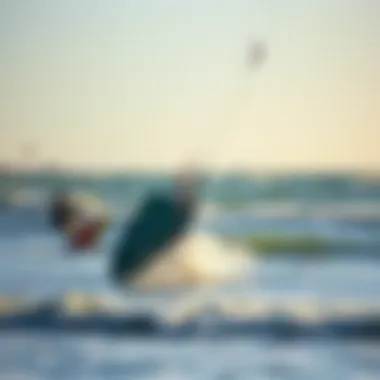
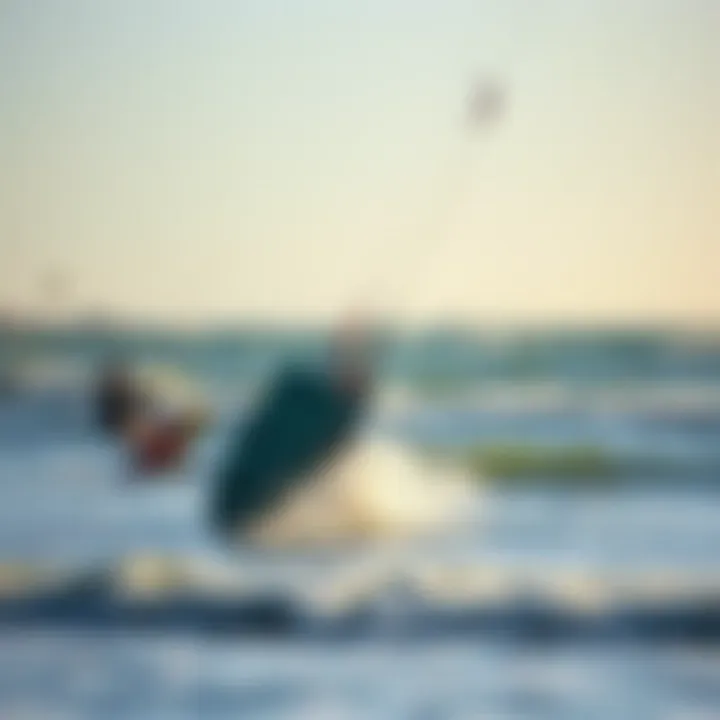
Cultural Influences on Kite Surfing in South Carolina
In South Carolina, kite surfing is more than just a sport; it’s a rich tapestry woven from the threads of local culture, community spirit, and environmental consciousness. This section ventures into how these cultural influences shape the kite surfing scene, fostering camaraderie among enthusiasts while also promoting a lifestyle that respects natural surroundings.
Local Festivals and Competitions
Around the Carolinas, kite surfing festivals and competitions serve as pivotal events that connect both novice and seasoned kiteboarders. These gatherings aren’t only competitive; they’re vibrant celebrations of the sport that create a sense of kinship among participants. For example, the Kite Festival held annually in Folly Beach draws people from all corners, showcasing unique kite designs and thrilling performances from top riders.
These festivals often include workshops, allowing those relatively new to the sport to learn from the pros. Participants have the chance to get feedback on their techniques or perhaps discover the latest kiting tricks. Additionally, those interested in the art of kite design can engage in informative sessions, diving into how sociocultural elements influence kite aesthetics and performance. This community-focused atmosphere enriches the experience of kite surfing, turning it into a significant social event rather than just a physical activity.
Furthermore, competitions like the Myrtle Beach Kiteboarding Championship not only feature skilled riders but also celebrate local talent. These events often reflect local traditions, and riders sometimes incorporate local imagery into their gear, further enriching the cultural fabric of kite surfing in South Carolina.
Community and Collaboration
Collaboration within the kite surfing community in South Carolina highlights its cultural underpinnings. Whether through local clubs or smaller meetup groups, enthusiasts often rally together to share tips, organize excursions, or even volunteer for beach clean-ups, emphasizing the importance of environmental responsibility.
Local clubs serve as crucial hubs for information exchange. They conduct training sessions, ensuring that safety standards are upheld while fostering growth in skill levels. With seasoned instructors guiding less experienced surfers, this collaborative approach breaks down barriers, creating an inclusive environment.
Social media platforms, like Facebook and Reddit, also play a role in knitting this community closer. Groups dedicated to kite surfing share not only tips but also personal stories that inspire newcomers. Individuals often exchange information about local spots, wind conditions, and even travel suggestions to enhance their kite surfing endeavors.
Such collaborative endeavors reflect broader cultural sentiments in the state—an interconnectedness that resonates deeply with both residents and visitors.
In essence, the culture surrounding kite surfing in South Carolina invites participants to not just ride the waves but to dive into a community that values shared experiences, environmental care, and a genuine passion for the sport.
The Future of Kite Surfing in South Carolina
As kite surfing continues to evolve, South Carolina stands at a pivotal crossroads for this exhilarating sport. The local community has grown significantly, fostering a vibrant culture around kite surfing with a future ripe for potential developments. From the perspective of enthusiasts, instructors, and travelers, examining the future is more than just analyzing trends; it’s about understanding how this sport can thrive amidst environmental, technological, and social changes.
Potential Developments and Growth
In the grand scheme, South Carolina is increasingly recognized for its ideal conditions for kite surfing—consistent winds, beautiful beaches, and a welcoming community. Peering into the horizon, several potential growth avenues come to mind:
- Increased Popularity: As more people unroll their kites and hit the water, the sport can expect a surge in participation. Perfectly located near metropolitan areas, the state becomes a magnet for thrill-seekers.
- Kite Schools and Training Camps: With the increasing interest in learning the ropes of kite surfing, the establishment of dedicated schools and camps can take shape. This would not only cultivate talented new kiteboarders but also promote safety and environmental awareness.
- Environmental Initiatives: As participants grow in numbers, so does the responsibility to protect local ecosystems. Partnerships between kite surf schools and conservation organizations could lead to programs focusing on coastal preservation, ensuring that the wind and waves remain pristine.
- Events and Competitions: Hosting larger competitions can attract international attention. More events could mean an influx of visitors, boosting local economies and bringing the kiteboarding community closer.
- Collaboration with Local Businesses: Businesses that cater to kite surfers—whether rental shops, restaurants, or lodging—can find more synergies to enhance the user experience, creating loyalty and a thriving local economy.
Technological Advances in Kite Surfing
The heart of the sport beats not just in the waves but also in innovation. New technologies are reshaping kite surfing, leading to an exciting future:
- Advanced Materials: The kites and boards of tomorrow will be lighter and more durable, utilizing materials that enhance performance while also being environmentally friendly. Innovations in design can lead to equipment that withstands harsher conditions, perfect for South Carolina’s weather variability.
- Smart Gear: Imagine a kite equipped with sensors that can communicate wind conditions back to the rider, providing real-time data to maximize performance and safety. This mirrors trends seen in other sports, embracing the intersection of athletics and technology.
- Drone Technology: As drone footage becomes a medium for instruction and content creation, kite surfers can share their experiences more vividly, appealing to a larger online audience. This could give rise to new forms of storytelling within the kite surfing community.
- Safety Enhancements: Enhanced life jackets fitted with GPS tracking could improve safety, especially in remote locations where help may be far away. This kind of tech brings peace of mind for both solo adventurers and families hitting the waves together.
The roadmap ahead for kite surfing in South Carolina appears promising. Combining community spirit with technological advancement and environmental responsibility can shape the future in a positive way. Those, young and old, who embrace kite surfing here will find wide-open skies and waves waiting to be conquered.
"The future belongs to those who believe in the beauty of their dreams." – Eleanor Roosevelt
For further exploration and insights, you can tap into avenues like Wikipedia on Kite Surfing or check forums on Reddit for community discussions.
Epilogue
As we wrap up our exploration of kite surfing in South Carolina, it is essential to recognize the significance of this vibrant sport not only within the realm of outdoor activities but also as a wonderful way to connect with the stunning coastal landscapes. The blend of exhilaration and connection to nature makes kite surfing unique. South Carolina, with its varied locations—from the serene beaches of Folly to the lively Myrtle Beach—offers something for everyone.
Recap of Key Points
Throughout this article, we have detailed several key facets of kite surfing:
- Historical Background: Understanding how kite surfing has evolved, especially in South Carolina, reveals its growing popularity and the local community that supports it.
- Ideal Locations: The article highlighted prime spots for kite surfing, from the Outer Banks to Charleston, catering to all skill levels and preferences.
- Essential Gear: Knowledge of kites, boards, and safety equipment is crucial for any kite surfer aiming to engage safely and effectively.
- Techniques: We covered techniques suited for beginners all the way to advanced kite surfers who wish to perform stunts.
- Safety Considerations: The importance of understanding weather conditions, personal safety measures, and environmental awareness has been emphasized.
- Cultural Influences: Local festivals and community events enrich the experience, fostering a sense of belonging among kite surfers.
- Future Trends: Finally, we examined the potential growth of kite surfing, thanks to advancing technology and increasing interest.
Encouragement for New Enthusiasts
For those hesitating on the fence about trying kite surfing, this is your nudge to jump in! The key to enjoying this sport lies in the willingness to learn and embrace the waves. Don’t be intimidated if you’re starting at square one; everyone begins somewhere. Many local schools and instructors are ready to guide you through the process of learning, ensuring you gain confidence on the water.
Just imagine the feeling of gliding across the surface with the wind at your back and the ocean beneath your feet. The community in South Carolina is welcoming, filled with fellow enthusiasts who are keen to share tips, resources, and encouragement.
Ultimately, kite surfing is about both personal achievement and shared experiences. Take the plunge; pack your gear, head down to the coast, and discover what kite surfing has to offer! You might find yourself hooked, eagerly looking forward to your next adventure on the water.
"The journey of a thousand miles begins with one step—or in this case, one kite."
For more information on kite surfing regulations and lessons, check local resources like South Carolina Government or community pages on Reddit.
A new world awaits you—get out there and make it your own!







